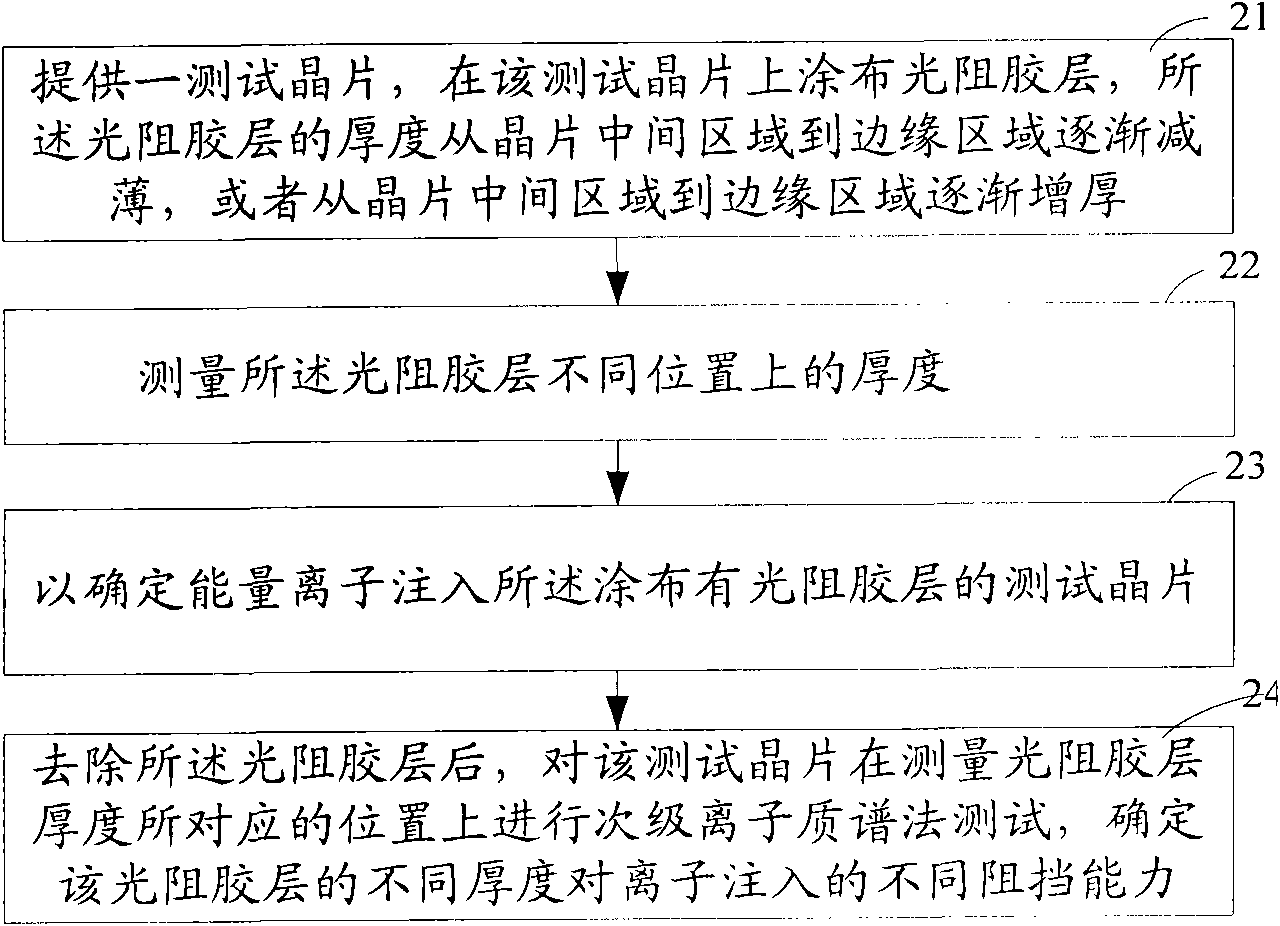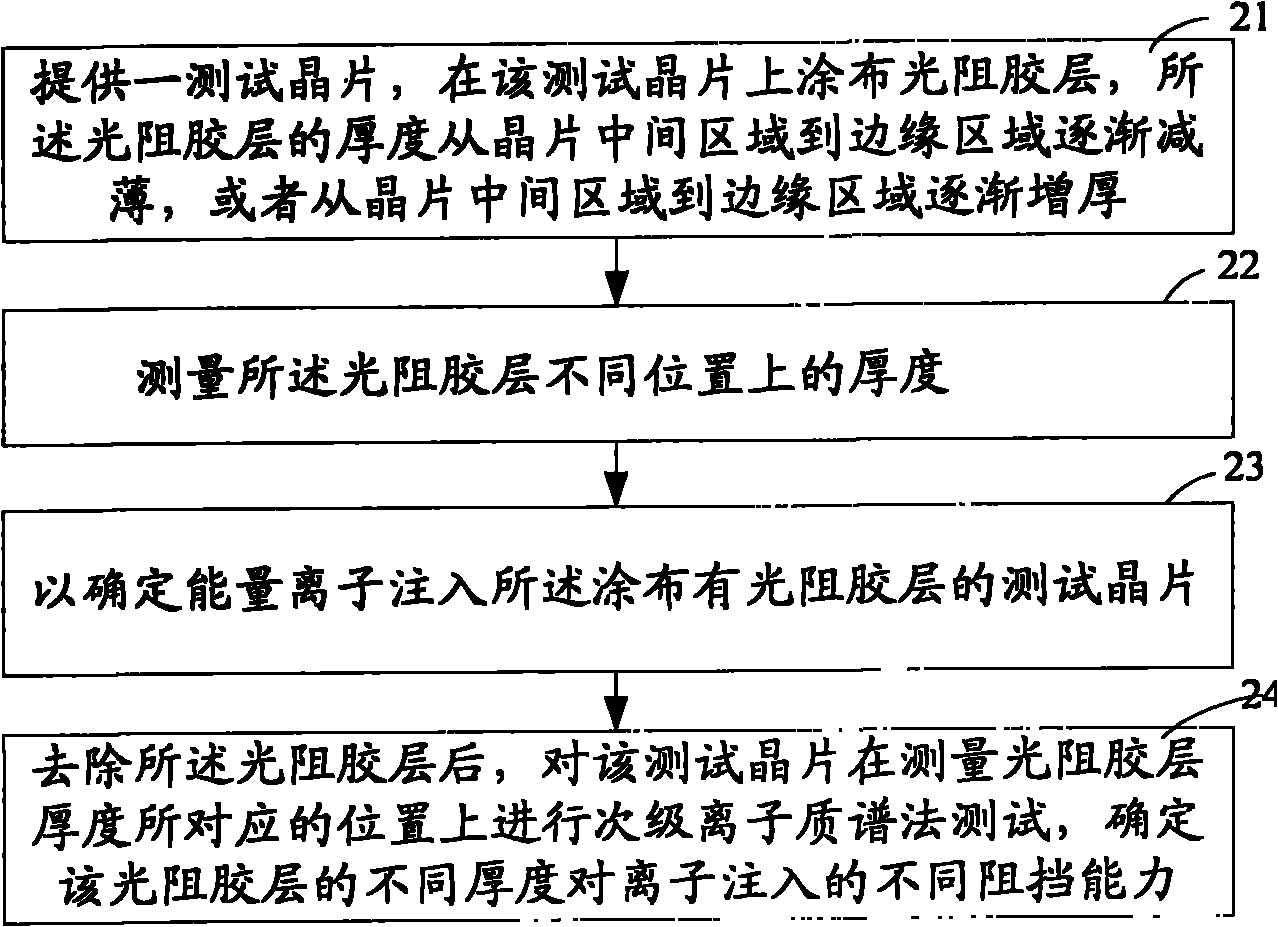Method for testing blocking capacity of photoresist layer to ion implantation
A technology of injecting blocking and photoresist glue, which is applied in semiconductor/solid-state device testing/measurement, electrical components, semiconductor/solid-state device manufacturing, etc. It can solve the problems of costing test wafers, missing, and discontinuous thickness of photoresist glue layer, etc. Achieve the effect of reducing test cost and reducing the number of wafers
- Summary
- Abstract
- Description
- Claims
- Application Information
AI Technical Summary
Benefits of technology
Problems solved by technology
Method used
Image
Examples
Embodiment Construction
[0023] In order to make the object, technical solution, and advantages of the present invention clearer, the present invention will be further described in detail below with reference to the accompanying drawings and examples.
[0024] The invention provides a method for testing the blocking ability of the photoresist adhesive layer to ion implantation, the schematic flow chart of which is as follows figure 1 As shown, the method includes:
[0025] Step 21, providing a test wafer, coating a photoresist layer on the test wafer, the thickness of the photoresist layer gradually decreases from the middle area of the wafer to the edge area, or gradually increases from the middle area to the edge area of the wafer .
[0026] The coating of the photoresist layer in this step is realized by controlling the rotation speed of the wafer. Because when coating the photoresist glue layer on the surface of the wafer, at first it is necessary to drop the solvent of the photoresist glue ...
PUM
 Login to View More
Login to View More Abstract
Description
Claims
Application Information
 Login to View More
Login to View More - R&D
- Intellectual Property
- Life Sciences
- Materials
- Tech Scout
- Unparalleled Data Quality
- Higher Quality Content
- 60% Fewer Hallucinations
Browse by: Latest US Patents, China's latest patents, Technical Efficacy Thesaurus, Application Domain, Technology Topic, Popular Technical Reports.
© 2025 PatSnap. All rights reserved.Legal|Privacy policy|Modern Slavery Act Transparency Statement|Sitemap|About US| Contact US: help@patsnap.com



